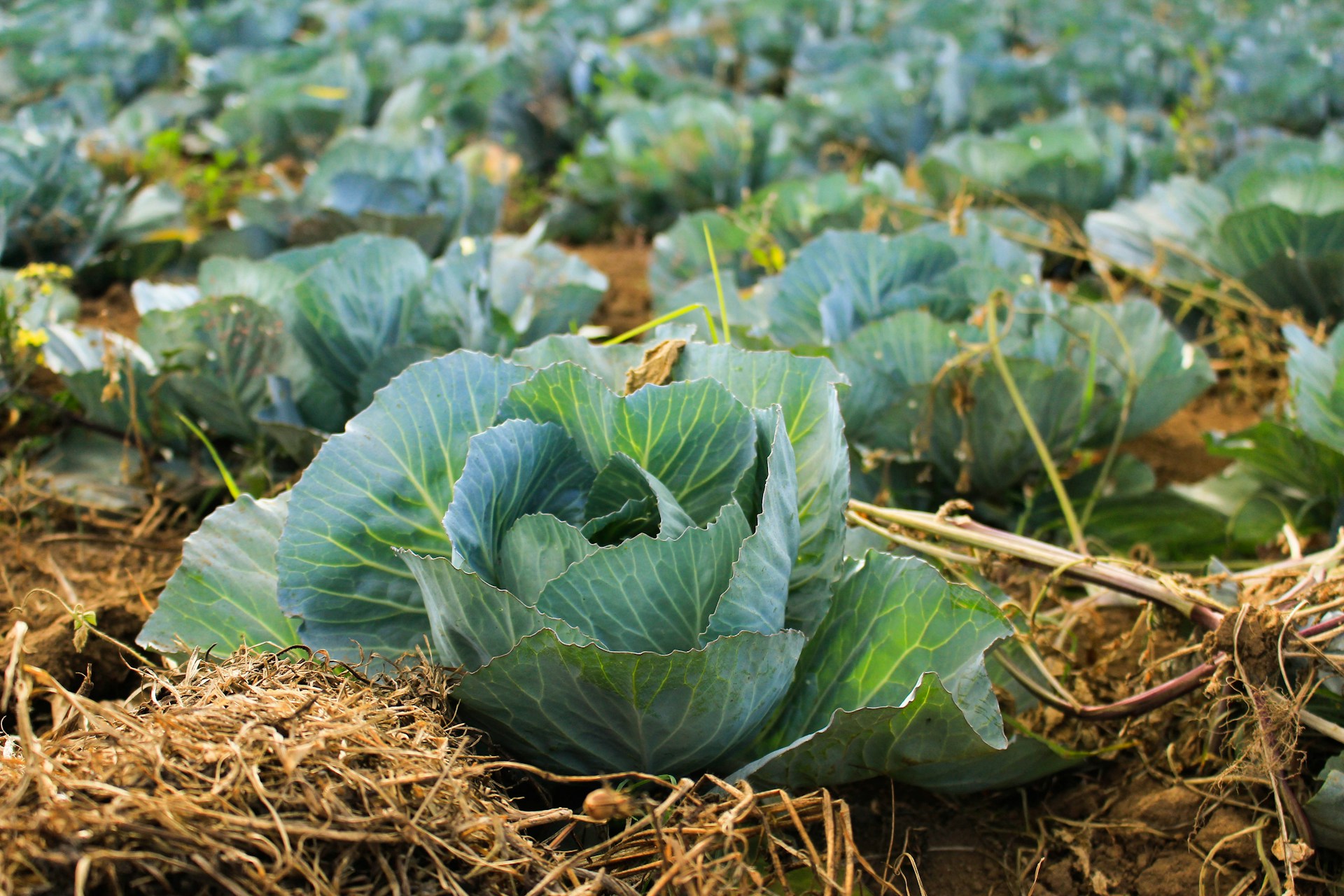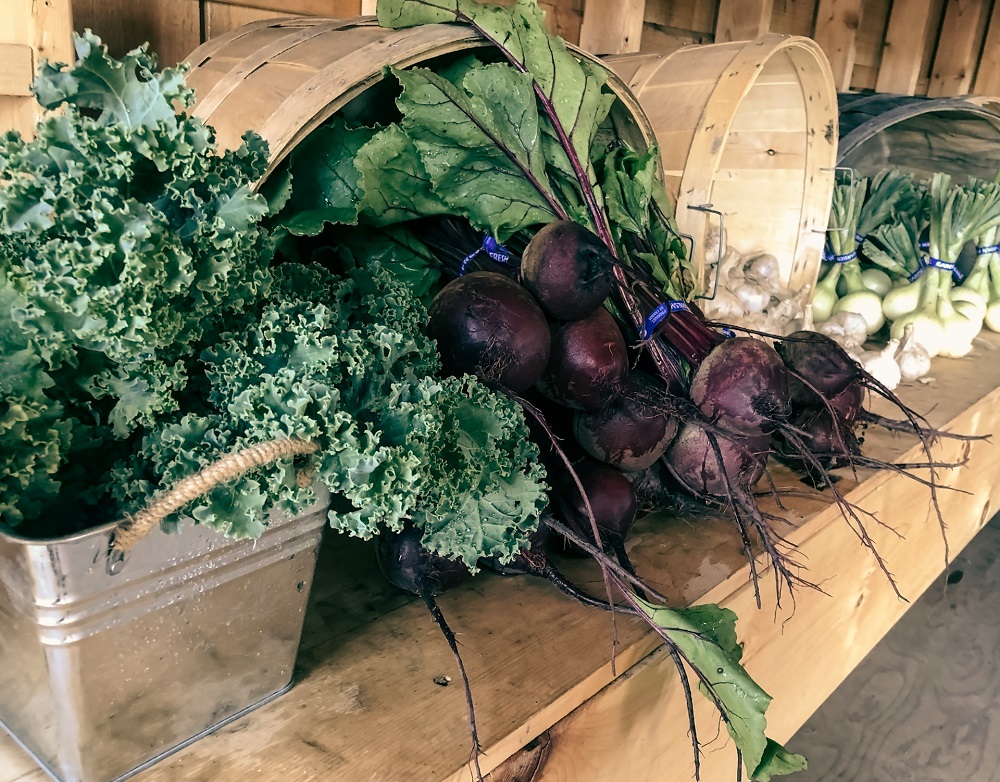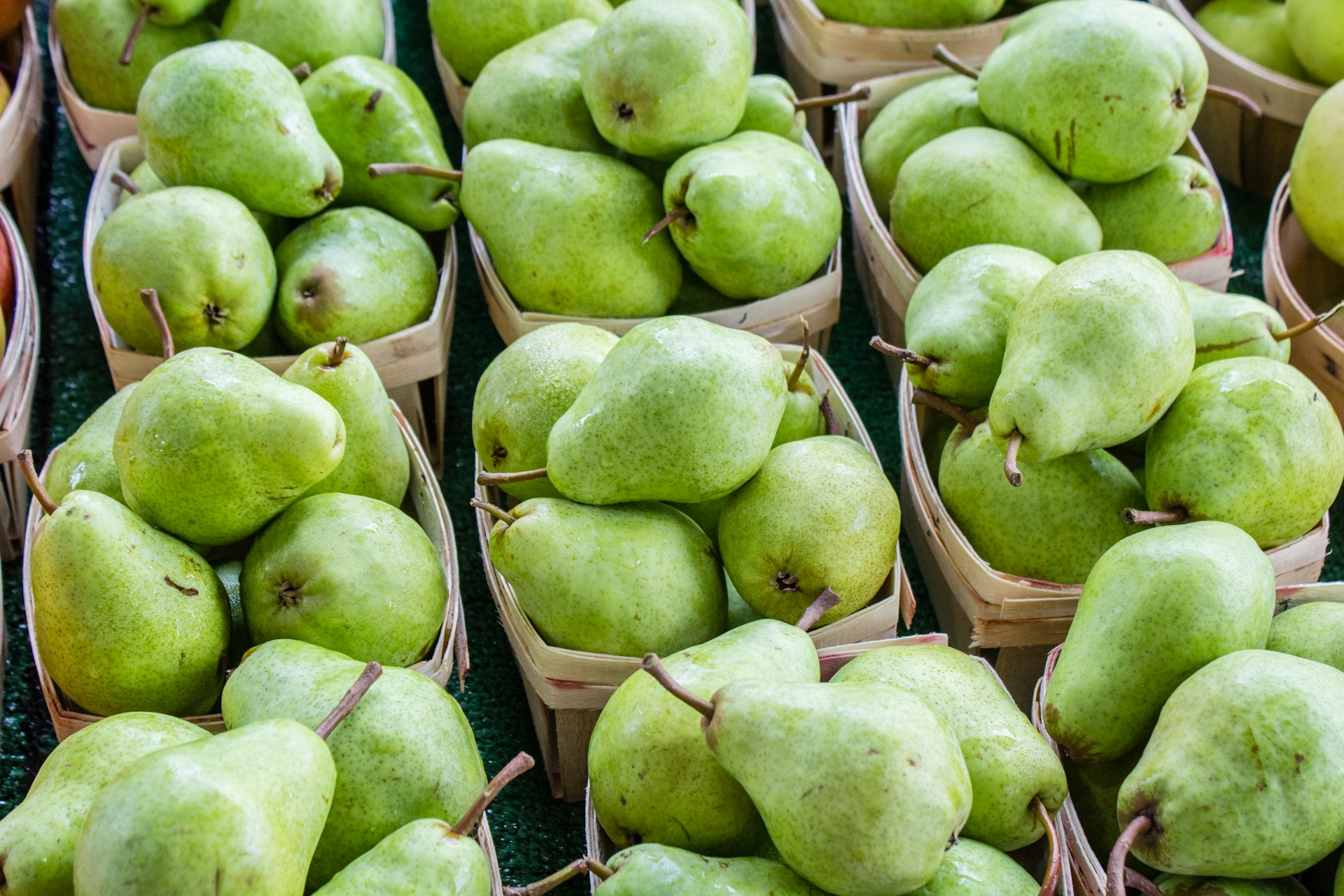The world of fresh produce distribution is rapidly evolving with the advent of new technologies.
Traceability is now a significant component in this sector due to its role in ensuring food safety and quality assurance.
The transparency it provides has become a non-negotiable aspect for discerning consumers and strict regulatory bodies.
However, traditional tracing methods are increasingly being deemed inefficient or even obsolete.
The need for real-time data and the demand for efficiency have put the industry on a transformative path.
This leads us to explore the varied and innovative techniques currently being implemented in produce traceability systems across the globe.
Contents
- Innovative Traceability Techniques In Produce Distribution
- 1. GPS Tracking for Transport Vehicles
- 2. QR codes on packaging
- 3. RFID Tagging of Individual Items
- 4. Time-temperature indicator labels
- 5. Near field communication (NFC) chips
- 6. Blockchain-based supply chain tracking
- 7. Unique Identifier Barcodes
- 8. Cloud-based Inventory Tracking
- 9. Biodegradable Traceability Stickers
- 10. IoT devices for real-time monitoring
- The Bottom Line
Innovative Traceability Techniques In Produce Distribution
1. GPS Tracking for Transport Vehicles
The digitized era of the 21st century has seen a significant rise in innovative traceability techniques in various sectors, one of the most notable being produce distribution.
GPS tracking for transport vehicles has proven to be an exceedingly beneficial technology that aids in maintaining the transparency and reliability of supply chains.
This technological innovation provides real-time visibility into the travel journey of goods and helps to monitor the freshness and quality of products while they are in transit.
Given the perishable nature of produce, GPS tracking has emerged as a vital tool in ensuring their timely delivery and minimizing wastage.
Through continuous monitoring and tracking, this mechanism enables companies to manage inventory and prevent losses due to spoilage and other unforeseen circumstances.
Moreover, it assures consumers about the authenticity of their purchased items, thereby significantly enhancing customer trust and satisfaction.
GPS technology enables businesses to keep a watchful eye on routing and timing, ensuring that products are not left in conditions that may compromise their quality.
It also helps to ensure that the delivery routes are optimized to reduce fuel consumption and deliver products in the fastest and most efficient way possible.
Moreover, the use of this tracking mechanism can also predict any possible delays, enabling businesses to reassess their delivery or distribution strategies when necessary.
Automation is another crucial component of GPS tracking systems.
Automatic alerts can be set up for critical events like departure from the warehouse, arrival at the destination, or significant changes in temperature or humidity on the vehicle.
This enhances the efficiency of product distribution and improves response times to potential issues, enhancing the overall efficiency and effectiveness of produce distribution organizations.
GPS tracking data can also be used to analyze and improve supply chain efficiency.
Valuable insights gained from this data can help businesses identify areas of improvement, optimize operations, and make data-driven decisions.
This advanced traceability technique is a win-win for both businesses and consumers.
While businesses achieve greater efficiency, transparency, and customer confidence, consumers enjoy better quality produce and improved transparency regarding the origin and journey of the products they purchase.
GPS tracking for transport vehicles is undeniably a revolutionary innovation in the world of produce distribution, transforming traditional ways while ensuring safety and quality assurance.
2. QR codes on packaging
Technology has drastically changed the way we counterpart the business world, and agriculture is not an exception to this advanced revolution.
The enhanced efficiency and accuracy levels contributed by these revolutionary changes have completely transformed the agricultural industry.
One of such groundbreaking inventions that have brought tremendous transformation in the agricultural sector and specifically in agricultural produce distribution is the introduction of Quick Response (QR) codes on the packaging.
QR codes are machine-readable optical labels that contain information about the item to which they are attached.
These codes are used as a directing tool to a specific location on the internet where detailed product specifics such as its origin, production date, expiration date, among other important details held.
The use of QR codes in produce distribution has improved traceability in the agricultural supply chain in a significant way.
By simply scanning the QR code with a smartphone, the consumer can get access to all the relevant information about the product he/she is buying or wants to buy.
This has significantly enhanced transparency in produce distribution, as the consumers can know exactly where their food is coming from.
More importantly, the QR codes can be used to access the temperature and humidity history of perishable goods such as fruits and vegetables during their transportation from the farm to the market.
This is a substantial milestone in ensuring that high-quality standards are maintained in produce distribution.
Moreover, QR codes have enhanced inventory management in produce distribution.
Distributors can quickly scan the QR codes in the packages and get all the necessary information about the products for effective inventory control.
This, consequently, helps in reducing wastage and improving the efficiency of produce distribution.
Moreover, the traceability offered by QR codes can assist in quick and accurate recall of products in case of any food safety concern.
Thus, the application of QR codes in produce distribution positions them as a reputable and innovative traceability technique in the agricultural industry.
The potential and effectiveness of QR codes in enhancing the traceability of products, therefore, cannot be understated.
3. RFID Tagging of Individual Items
Implementing RFID tagging of individual items can significantly boost the efficiency and accuracy of tracking in produce distribution.
The use of RFID tags, or Radio Frequency Identification tags, is a highly innovative traceability technique.
They integrate the use of electromagnetic fields to automatically track and identify the items they are attached to.
Their tracking capability is far superior to conventional barcodes because RFID tags can be read remotely and do not require line-of-sight with the reading device.
This creates the potential for significant time savings in the logistics and distribution process.
The substantial incorporation of technology and automation in the distribution process allows for increased control, better quality and less waste.
This is crucial in produce distribution, where timing and freshness are often vital.
RFID tags allow distribution companies to maintain a real-time overview of the location and status of their items.
This contributes to more effective and timely decision making, beneficial for perishable items like produce.
This traceability technique also helps to enhance protective measures against potential wrongdoings such as theft or misplacement.
RFID tagging not only improves the logistics process but also contributes to the customer’s shopping experience.
It provides the real-time product information customers may want or need when making a purchase.
Therefore, this technology delivers numerous benefits to all players within the supply chain.
However, as advanced as RFID tagging technology is, it is essential for companies to continue to improve and innovate in this space.
RFID tags are a durable and reliable means of tracking, even in harsh conditions or at high speeds, and they could become the preferred choice for businesses dealing with perishable or high-value items.
The integration of IoT technologies can make the information obtained from these tags more accessible and usable.
RFID tracking technology could become a cornerstone for the future of traceability in produce distribution.
4. Time-temperature indicator labels
One often overlooked but highly innovative traceability technique in produce distribution is the use of time-temperature indicator labels.
These labels play a critical role in monitoring and preserving the optimum quality of perishable food products, particularly in transit.
Time-temperature indicator labels work by keeping track of the cumulative time and temperature to which the packaged produce has been exposed.
They are particularly useful in identifying shipments that have been subjected to inadequate temperature control during their journey.
This is significant as poor temperature control can lead to the deterioration of the product’s quality and even cause health risks to the consumer.
Time-temperature indicator labels, hence, act as a straightforward and efficient means of implementing real-time quality control throughout the supply chain.
The proper management of temperature-sensitive goods, common in produce distribution, is crucial to prolong shelf life and maintain the good standing reputation of the distributor.
These labels, which often change color as temperature increases or time elapses, enable anyone handling the goods to immediately notice if there have been any infractions.
Interestingly, the use of time-temperature indicator labels ensures that the parties involved in the supply chain are held accountable for any negligence in the handling and storage of the goods.
Moreover, these labels also enable a more efficient reaction to potential problems by indicating when, where, and to what extent a temperature violation has occurred.
This allows to improve logistics planning, as well as the overall effectiveness and reliability of the cold chain distribution system for fresh produce.
It’s important to note that time-temperature indicator labels are easy to read and interpret, making them user-friendly for all stakeholders involved, from handlers to consumers.
Moreover, the cost-effectiveness and simplicity of these labels make them an attractive and feasible option for large-scale implementation in the produce distribution industry.
Even though these labels do not provide the exact real-time temperature recording, they offer an invaluable instantaneous overview of the temperature history of a product throughout its journey.
With the consumer demand for fresh and quality produce rising, the role of time-temperature indicator labels in providing a safe and quality-assured food supply chain cannot be overstated.
5. Near field communication (NFC) chips
The integration of Near Field Communication (NFC) chips is rapidly emerging as one of the innovative traceability techniques in the sphere of produce distribution.
These tiny but powerful chips allow wireless communication between two devices placed in close proximity, thereby facilitating the transfer of vital information with a simple tap.
NFC chips have revolutionized traceability by significantly simplifying and making the tracking process more efficient than ever.
The primary reason that NFC chips are increasingly being looked upon as an essential tool for traceability lies in their ability to store and transmit data about the journey of the produce.
From information about the harvest to details of the multiple touchpoints during the distribution process, these chips offer complete transparency about the journey of the produce.
In case of any anomalies or potential risk points during the journey, NFC chips enable instant detection and provide all the necessary details to trace back to the point of issue.
Interestingly, not only does this ensure that any disruptions or problems can be addressed promptly, but it also enhances accountability across the produce distribution chain.
By making use of NFC chips, produce distribution companies can significantly increase the efficiency of their supply chain and improve their ability to ensure the safety and quality of their products.
Furthermore, the adoption of NFC chips in produce distribution can provide real-time updates to customers, increasing trust and loyalty.
Customers can simply tap their smartphones against the NFC-enabled packaging to access detailed information about the produce such as its origin, freshness, and any potential allergens.
The use of NFC technology in produce distribution is not just limited to traceability, but it also supports sustainability efforts.
Since the data transmission through NFC chips does not require any paper documentation, it significantly reduces paper waste and supports the ‘go green’ initiative.
In addition, NFC chips are reusable which further contributes to sustainability practices.
Being tiny and lightweight, these chips do not add any significant weight or bulk to the produce packaging, making them an efficient and convenient solution for traceability.
While the cost of implementing NFC chips into a produce distribution chain can be considerably high, the long-term benefits and efficiencies these chips bring can far outweigh these initial costs.
To sum up, NFC chips present a powerful and innovative solution for improving traceability measures in produce distribution. They not only elevate efficiency and accountability but also promote transparency and sustainability in the process.
6. Blockchain-based supply chain tracking
The application of blockchain technology in supply chain tracking presents unique opportunities and benefits.
Blockchain-based supply chain tracking involves recording all movements and transactions of a product from its source to the end customer.
This sophisticated technology enhances transparency in produce distribution by providing a secure and digitized method of recording and verifying information.
This form of traceability reduces the risk of fraud and counterfeiting in the supply chain by making it extremely difficult to alter or forge recorded data.
Through blockchain, all involved parties can view and verify the history and location of a product anytime and anywhere.
This genuine transparency enables quicker product recalls in incidents of contamination or faulty products.
Moreover, blockchain-based tracking adds a new level of credibility to produce distribution.
This occurs as it unequivocally assures customers of the authenticity and safety of their purchased products.
Often, traditional paper-based documentation and record-keeping systems make it challenging to trace the origin or verify the authenticity and safety of produce.
Blockchain technology resolves these issues by providing a trustless system where the integrity of information does not rely on any single authority or organization.
Consequently, blockchain can drastically minimize delays and eliminate intermediaries, optimizing the process of produce distribution.
Furthermore, the potential of blockchain technology extends to enhancing cooperation and trust between all stakeholders within the supply chain.
This includes regulators, manufacturers, distributors, retailers and consumers who can all benefit from shared and verified information.
Indeed, the integration of blockchain technology can lead to a major paradigm shift in the way traceability is handled in produce distribution.
While blockchain technology is relatively new and complex, its potential in innovative traceability techniques is undeniable and far-reaching.
Investments in blockchain-based supply chain tracking will continue to grow as more businesses recognize its transformative capabilities.
7. Unique Identifier Barcodes
With the rapid evolution in the field of technology, the food traceability landscape is witnessing a revolution through innovative techniques and one such revolutionizing technique is the use of Unique Identifier Barcodes.
The basic purpose of these unique identifier barcodes is to streamline the process of produce tracking from the point of origin to the end consumer.
These barcodes serve as a critical link in enhancing efficiency, transparency, and traceability in produce distribution.
The unique identifier barcodes are a set of machine-readable numbers that are assigned to an individual product, thus making each unit distinctly identifiable.
This system of labeling is a way to store and retrieve information about a particular product, with the most salient feature being that it can easily be scanned at any point of time.
Coupled with the power of technology, they can even store data electronically, providing detailed insights of the product’s journey all through the supply chain.
The use of unique identifier barcodes is not limited to mere tracking, but they also play a major part in quality control of the food products.
They allow distributors and retailers to effectively manage inventory, ensuring minimal product wastage and optimized storage facilities.
Apart from streamlining the tracking and inventory management, the unique identifier barcodes contribute to seamless recall processes.
In the event of a contamination or any other hazard associated with a specific batch of produce, the barcode system allows for a quick and efficient product recall.
This not only ensures customer safety but also helps minimize losses for the produce distribution entities.
Furthermore, unique identifier barcodes can protect consumers from food fraud as each product can be traced back to its point of origin, ensuring product authenticity.
Moreover, this technique is helping businesses build brand trust and reputation, as it supports provenance claims and creates transparency in supply chain.
Encompassing all these facts, it’s clear that unique identifier barcodes are a game-changing tool in food traceability and in ensuring the safety, quality, and authenticity of the products in the produce distribution.
Thus, it can be rightfully said, the unique identifier barcodes are an epitome of innovation in traceability techniques in the world of produce distribution.
8. Cloud-based Inventory Tracking
In the sphere of produce distribution, one of the greatest challenges faced is keeping track of the inventory, and knowing where each produce item is at any given moment.
Addressing this challenge and enhancing traceability in the supply chain is cloud-based inventory tracking.
This innovative traceability technique works by ensuring that data about every produce item is stored remotely in the cloud, allowing for real-time updates and location tracking.
Upon the arrival of produce in a warehouse or distribution center, details about the produce, including its origin and type, are entered into the cloud-based inventory tracking system.
The system then assigns a unique identifier to each batch of produce, allowing for simple tracking across the entire supply chain.
Cloud-based inventory tracking offers a greater level of precision and detail in tracking than traditional methods, permitting one to pinpoint the exact location of a particular batch of produce at any given time.
By offering real-time updates, such a system allows for immediate adjustments in the event of changes in demand, or sudden issues with a particular batch of produce.
It also allows for this With the information being accessible from any device connected to the internet, users can track their inventory remotely, allowing for increased flexibility in managing produce distributions.
This strategy reduces instances of waste by providing rapid notifications if produce is nearing its sell-by date, or if a particular batch has been flagged for quality concerns.
Moreover, cloud-based inventory tracking lends itself to better forecasting by using the wealth of data available to predict demand patterns and optimize produce distribution accordingly.
The use of the cloud for inventory tracking brings cost effectiveness with it, eliminating the need for expensive hardware and the cost associated with its maintenance.
Moreover, it enables scalability because as the quantity of produce distributed increases, the cloud-based system can easily adjust to handle the increased data load.
Security is another key advantage of cloud-based inventory tracking, with advanced encryption methods ensuring the data stored is protected and confidentiality maintained.
Further, cloud-based systems allow for easy integration with other digital platforms, such as e-commerce sites, for seamless inventory management and sales operations.
Finally, as technological advancements continue to come up, cloud-based inventory tracking can easily be updated and upgraded to ensure it remains on par with the latest traceability techniques in produce distribution.
9. Biodegradable Traceability Stickers
As the demand for transparency in the food supply chain increases, the use of biodegradable traceability stickers have emerged as an environmentally-friendly and efficient solution.
Biodegradable traceability stickers are applied directly onto individual pieces of produce and offer a unique identification number.
This number provides access to valuable information regarding the product’s origin, date of harvest, transportation details, and storage conditions.
As they are made from biodegradable materials, these stickers decompose naturally with time, making them a perfect fit for the eco-conscious consumer.
These stickers are typically printed using organic inks, further contributing to their environmental consciousness.
Moreover, biodegradable traceability stickers are not just environment-friendly but also beneficial for the distributors and traders.
The application of these stickers is usually quite cost-effective, adding minimal overhead while simultaneously providing a reliable traceability solution.
Safety and quality issues, along with sustainability goals, can be efficiently managed with the help of these biodegradable traceability stickers.
They allow for a quick and straightforward tracking of the product from the field to the supermarket.
Such detailed traceability can enhance the trust relationship between the supplier and the consumer, thereby promoting brand loyalty.
Furthermore, in the case of a product recall, the traceability provided by these stickers comes in absolutely handy and facilitates the process.
Biodegradable traceability stickers can efficiently monitor and isolate the affected batch, reducing financial losses and protecting the brand’s reputation.
This innovative traceability technique not only provides valuable information to the end consumer, but also aids in demand forecasting and maintaining optimal stock levels for distributors and retailers.
Besides, as consumers become more environmentally conscious, using green solutions like biodegradable traceability stickers can offer a competitive edge for brands.
In conclusion, biodegradable traceability stickers when used in produce distribution, permit highly efficient, cost-effective, and environmentally-friendly tracking of food products, thereby aiding in quality control, safety assurance, and environmental sustainability.
Thus, this approach forms an essential part of innovative traceability techniques in produce distribution, embodying the future of sustainable and transparent supply chains.
10. IoT devices for real-time monitoring
The Internet of Things (IoT) has given rise to a new era of traceability in produce distribution.
IoT devices can real-time track and monitor the whereabouts and condition of fresh produce from the farm to the end consumer.
The real-time nature of these devices provides a constant flow of up-to-date information, which allows for improved operational efficiency and responsiveness in the supply chain.
This tracking feature coupled with the fact that IoT devices are often equipped with a variety of sensors, can give a near-real-time insight into the condition of the fresh produce.
From temperature and humidity sensors to impact detectors, these devices can keep a constant eye on the produce ensuring its quality and safety during transportation.
This kind of continuous monitoring can help avoid spoilage, prevent contamination, and most importantly, it can provide proof of compliance to quality standards and regulations set by the industry and the government.
Moreover, these IoT devices can collect a large amount of valuable data that can be analyzed and used for predictive analytics and future planning.
Predictive analytics can help identify risks and issues before they occur, thereby reducing waste and increasing business profitability.
As IoT devices are connected to the internet, they can share real-time updates with all relevant stakeholders, allowing for a transparent and efficient supply chain.
This transparency can improve the relationship between growers, distributors, retailers, and consumers by providing trustworthy traceability and product information.
Another significant advantage of IoT devices in produce distribution is that they are often compact and easy to install, making them a convenient and efficient traceability solution.
Furthermore, as technology evolves and gets more sophisticated, we can only expect that these devices will become more accurate, comprehensive, and easier to use, making them an integral part of the future of produce distribution.
In a world where consumers are becoming increasingly conscious about the origin and quality of their food, the use of IoT devices for traceability can give a distinct competitive advantage to businesses in the produce industry.
This is a rapidly advancing area of technology that promises to bring significant benefits to the produce industry and change the way we think about traceability and transparency in the supply chain.
In a nutshell, IoT devices for real-time monitoring are not just a fancy tech buzzword, but a tool that is set to shape the future of the produce distribution industry and improve its efficiency, responsiveness, and profitability.
The Bottom Line
Advanced tracking and monitoring technologies have undeniably elevated the efficiency of supply chain management to unprecedented heights.
GPS tracking, QR codes, RFID tagging, NFC chips, and unique identifier barcodes are just a handful of innovations that have revolutionized asset management, ensuring secure, precise, and instantaneous tracing of goods.
More cutting-edge innovations such as blockchain-based tracking, cloud-based inventory systems, and IoT devices allow for unparalleled transparency and real-time monitoring.
Furthermore, the introduction of environmentally-friendly alternatives like biodegradable traceability stickers is a testament to how this industry is mindful of its ecological footprint.
These developments not only enhance operational efficacy, but they also bolster trust among customers by ensuring product authenticity.
Therefore, the integration of such technologies has become a cornerstone in modern supply chain systems.




